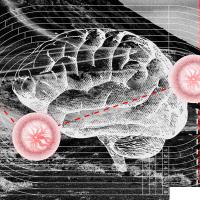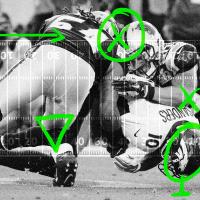“Keep your eye on the ball” is taking on a whole new meaning, as more and more professional athletes are beginning to incorporate eye tracking technology into their training sessions. With Fixation‘s eye tracking software, athletes can now monitor, analyze, and train their eye movements to effectively reduce their average reaction time.
How Does Eye Tracking Work?
Eye tracking technology has been around since the 1980s, but using it in sports is a relatively new concept. Athletes started using eye tracking to gain a more complete understanding of their abilities and performance.
Eye tracking is the practice of measuring and recording eye movement. It monitors how the eyes move, what they ignore, and how the pupil reacts to various visual stimuli. An eye tracking device uses infrared light to detect movement.
Interpreting these eye movements is fairly complex, as the eyes can move minutely or in broad strokes, in straight lines or arcs, and the pupils can dilate or constrict at different speeds. Plus, all of this can happen multiple times, every second.
In order to effectively analyze the data collected, it’s uploaded into an eye tracking software program, which helps the trainer and athlete observe the various movements and patterns that occur during training.
The Benefits of Eye Tracking in Sports
Keeping your eye on the ball, although it may sound simple, is a complex process with serious consequences. While playing sports, the brain needs to collect information about the environment quickly so it can decide the body’s next move. An athlete’s eyes are primarily responsible for gathering that information so the brain can make these crucial decisions.
But when the eyes distractedly dart around on extraneous details such as the crowd, an athlete will lose focus and make mistakes – mistakes that could cost the entire team the game.
Tracking eye movements allows players to detect correlations between their visual attention, hand-eye coordination, and the choices they make while playing. They’re also better able to evaluate their visual search strategies (processes for tracking the ball) and trajectory estimations (ability to predict the direction the ball will take).
A 2017 study in the Journal of Sport Psychology in Action argues that although eye tracking in sports is typically thought to improve an athlete’s physical game, it actually reveals more about the way their mind works.
The study found that eye movement is an involuntary action based on reaction. For example, a nervous player will react to stimuli other than the ball, such as the crowd. This mental behavior results in a more erratic gaze pattern. So, tracking eye movement can also reveal an athlete’s cognitive thought process in real-time.
Fixation’s Eye Tracking System
Fixation’s proprietary eye tracking system looks like a pair of high-tech glasses that are armed with two cameras: one focused on your eyes, and the other looking outward. But wearing the glasses is only one part of Fixation’s three-step model.
The first step is collecting the data during capture sessions, which is how Fixation refers to training with the eye tracking glasses. Data is collected during this series of capture sessions, as the cameras track and record the athlete’s gaze patterns while playing.
Next, the data is analyzed to identify the athlete’s visual strengths and weaknesses, and develop a plan for improvement. During the analysis, athletes are able to watch a video, shot from their perspective, that’s overlaid with their gaze patterns.
The video is analyzed, using over 100 data points per second to quantify where, when, and how a player’s gaze moves. With a trainer, athletes can even compare their eye tracking data to the patterns of novices and professionals.
Once the movements are understood, the trainer can form personalized strategies for how to improve reaction time. Then, just like athletes have to train their muscles, they must work to train their gaze patterns and visual fixation abilities. The athlete will work through a training program that’s specifically designed for them.
Making More Saves With Eye Tracking Tech
Eye tracking technology can be useful for just about any competitive sport, but Fixation’s founder, John Roman, has chosen to focus his research and development on goalkeepers in soccer. Roman believes that understanding how to train your gaze to focus on a shot sooner can help goalkeepers predict where the ball is going before it’s even struck.
Professional goalkeeper Kaylan Marckese, who uses Fixation says, “Anytime you’re called in to touch the ball is usually a make or break moment, but I think that’s kind of the pressure of being a goalkeeper. It’s something I really enjoy.”
On average, goalkeepers only have about a 30% chance of stopping a penalty kick. Marckese says, “If I can improve my reaction time by just a second or two, I have a better chance of winning the game.”
Whether stopping a penalty kick or a bending shot from outside the box, there’s no doubt that trained eyes can maximize prediction accuracy, improving a goalkeeper’s chances of blocking the shot.
For the average, amateur athlete, shaving off fractions of seconds might seem insignificant. To professional athletes, however, these small amounts of time can make or break a career. When split seconds can mean the difference between victory or defeat, reducing average reaction time is essential.
For the latest in sports tech from our series The Edge, subscribe to Freethink.


